Exploring the Detailed Map of Mohammed Bin Zayed City
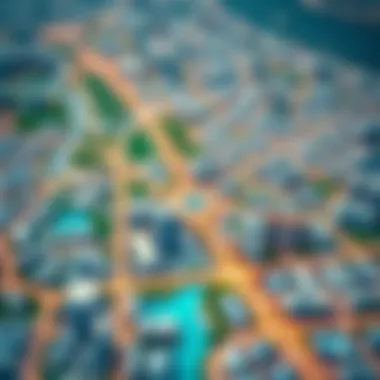
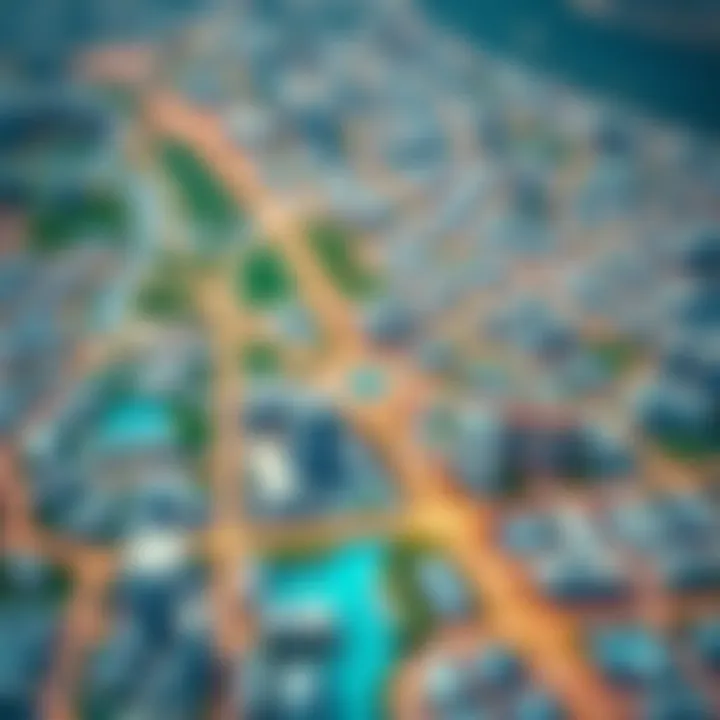
Intro
Mohammed Bin Zayed City, located in the heart of Abu Dhabi, is a burgeoning urban area that has drawn the eyes of investors, homebuyers, and urban enthusiasts alike. The map of this city reveals more than just streets and buildings; it offers insights into its potential, challenges, and future possibilities. Navigating through its layout not only provides a glimpse into its infrastructure but also into the vibrant community that is gradually taking shape.
As one gazes upon the detailed map, it becomes evident that the city is designed with accessibility in mind. Well-planned roads connect various sectors, making travel efficient while minimizing congestion. The proximity to vital amenities signifies its role as not just a residential area, but a vibrant hub of activity. Understanding this layout is essential for anyone looking to make informed decisions about property investments in this promising locale. In these pages, the narrative will unfold the different layers of Mohammed Bin Zayed City, from economic trends to essential buying tips, providing a rich tapestry of information.
Market Insights
Grappling with the real estate landscape of Dubai can be a daunting task, especially with the constant fluctuations in property prices. However, it is the current trends within the market that provide invaluable clues for prospective investors and homeowners.
Current Trends in Abu Dhabi Real Estate
Abu Dhabi has seen an upward trajectory in its real estate sector, buoyed by the city's strategic vision to become a global hub. A few key trends to note include:
- Increased Demand for Villa Living: There has been a marked shift towards villas and townhouses, particularly as families seek more space post-pandemic. The trend of seeking suburban life is mirrored in many other global cities as well.
- Focus on Sustainable Development: Eco-friendly projects are on the rise as developers integrate environmental sustainability into their designs, appealing to a more eco-conscious consumer base.
- Investment in Infrastructure: The city's ongoing investment in transport links and community developments is fostering increased interest in properties located in proximity to these new facilities.
These trends not only reflect current buyer preferences but also indicate a broader evolution in the market's dynamics. Understanding these shifts can equip individuals with the knowledge they need to navigate their investment decisions prudently.
Economic Factors Affecting Property Prices
The economic landscape of Abu Dhabi plays a pivotal role in determining property prices. Several factors come into play:
- Oil Prices: Fluctuations in oil prices can drastically impact the economy, directly influencing property investments and buyer confidence.
- Government Initiatives: Policies aimed at foreign investment and ownership can bolster demand, thus affecting prices.
- Interest Rates: The cost of financing can significantly impact purchasing power, which in turn shapes current market trends.
A sound grasp of these factors can greatly enhance an investor's ability to forecast possible outcomes in the property sector. This becomes a vital asset, especially when aiming to venture into Mohammed Bin Zayed City, where the road ahead seems laden with promise and potential.
Geographical Overview
Geographical layout serves as the backbone of any urban development, and Mohammed Bin Zayed City is no exception. Understanding this city's spatial configuration is vital for a myriad of reasons. First off, it helps potential residents visualise their future homes in relation to essential amenities and services. For investors, grasping the city’s geographical nuances can mean the difference between a lucrative investment and a costly mistake. Urban enthusiasts can also derive depth from the map, appreciating how the area's design aligns with the greater Abu Dhabi vision.
Each corner of this city is laden with implications, from its accessibility to prominent transport routes to its position relative to major landmarks. Consider the fact that geography influences local culture, commerce, and the community's character. Comprehending how these elements intertwine allows for a nuanced discussion on how they contribute to the city's livability and economic vitality.
Location and Boundaries
The exact positioning of Mohammed Bin Zayed City creates a profound impact on its identity. Nestled between significant arterial roads and bordered by lush green spaces, the city's boundaries are thoughtfully laid out, ensuring that it remains both central yet distinct. This optimal positioning not only elevates the area’s prestige but also provides convenience for commuting and access to the core of Abu Dhabi.
Bounded by the Abu Dhabi-Dubai Highway on one side and the Abu Dhabi International Airport on another, this location promises easy entry and exit points. The city also stands at a strategic distance from other notable districts, giving it an appeal that multifaceted residents, ranging from expatriates to local families, can appreciate.
Proximity to Major Landmarks
When considering a place to call home or invest in, proximity to key landmarks often weighs heavily in the decision-making process. In this regard, Mohammed Bin Zayed City shines brightly. Within a short drive, residents can access attractions that include shopping malls, schools, and healthcare facilities. For instance, the Abu Dhabi Mall and the Yas Island entertainment complex aren't just mere stones' throw away.
This alignment to activity hubs is particularly advantageous for families seeking lifestyle benefits without compromising on proximity to daily necessities. Moreover, being near the UAE University or the Masdar City accentuates the sense of community and culture that the area promotes.
Insight: “The city's geographical layout offers both convenience and vibrancy, enriching the living experience for its residents.”
Understanding the City Layout
Understanding the layout of Mohammed Bin Zayed City is key for anyone looking into its potential—be it investors, homeowners, or urban planners. The city is structured with a clear purpose, and familiarizing oneself with its design can yield benefits when considering property investments or planning urban developments. A well-organized layout facilitates smoother navigation, improving accessibility to various amenities, which can positively influence property values.
Main Thoroughfares
The thoroughfares in Mohammed Bin Zayed City serve as the arteries of urban life. Key roads like Al Falah Road and Sheikh Zayed Bin Sultan Road ensure seamless connectivity between residential, commercial, and recreational zones. These routes are designed not just for vehicular traffic but also accommodate pedestrian access, creating a balanced urban environment.
- Al Falah Road: This main thoroughfare runs through the heart of the city. Its wide lanes can handle heavy traffic, and it provides easy access to important destinations. Its significance lies in both daily commutes and emergency vehicular access.
- Sheikh Zayed Bin Sultan Road: Named after the late founding father of the UAE, this road is crucial for both local and intercity travel. It connects Mohammed Bin Zayed City to other significant parts of Abu Dhabi and beyond, linking residents to major highways and transport hubs.
Utilizing these main thoroughfares offers a mix of convenience and efficiency. Knowing these roads can help one avoid congested areas and time delays, making everyday life a bit more manageable.
Public Transportation Access
Navigating a city isn’t just about knowing the roads; public transport options are equally important. Mohammed Bin Zayed City has been thoughtfully planned to integrate various modes of transport, providing residents and visitors with choices to suit their needs.
The city benefits from both bus and taxi services, making it easier for those without personal vehicles. The Abu Dhabi public transport system has routes that service the area, allowing for economical travel across the city.
- Buses: Frequent bus services connect Mohammed Bin Zayed City to other key locations in Abu Dhabi. Info on routes can be checked at the official Abu Dhabi public transport website.
- Taxis: Readily available and often positioned near main thoroughfares, taxis provide on-demand transport, which is great for quick trips.
"Access to reliable public transport features prominently in a community’s quality of life. In many ways, it reflects the city's commitment to accessibility and sustainability."
With ongoing improvements in public transport, the city aims to reduce reliance on cars, promoting a healthier urban lifestyle. Overall, understanding how the city is laid out can lead to smarter decisions regarding living, investing, and everyday navigation.
Residential Zones
Understanding the residential zones of Mohammed Bin Zayed City is fundamental to grasping the nuances of its urban landscape. This area is not just a place to live; it embodies a lifestyle choice, reflecting social dynamics, economic opportunities, and cultural integration. With a variety of housing options available, the residential zones cater to diverse demographics, ranging from young professionals to families seeking larger accommodations. Recognizing these zones aids potential homeowners and investors in making informed decisions that align with their specific needs and aspirations.
Types of Housing Available
The housing landscape in Mohammed Bin Zayed City is broad and varied. Here, you can find a mix of villa communities, apartment complexes, and townhouses. Each type serves unique segments of the population:
- Villas: Typically larger, these properties offer spacious living environments ideal for families. Well-planned neighborhoods host them, providing not just houses but a sense of community. Many villas come with private gardens, giving families more outdoor space to enjoy.
- Apartments: With their modern designs and amenities, apartments attract young professionals and smaller families. Offering a range of sizes, they are often located closer to commercial areas, which makes them more appealing for those who prioritize access to work and entertainment.
- Townhouses: Filling the gap between villas and apartments, townhouses provide a unique blend of space and intimacy. They are often built in clusters, ensuring a neighborly feel, while still offering the benefits of semi-detached living.
Each option has its advantages and is designed to enhance the quality of life for residents while maximizing functionality.
Neighborhood Profiles
Diving deeper into the neighborhoods within Mohammed Bin Zayed City, each distinct area offers a unique flavor of community life:
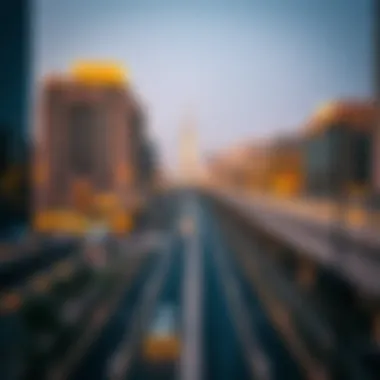

- Al Reeman: Known for its lush amenities, Al Reeman showcases a variety of villa configurations. It prides itself on family-oriented facilities, including parks and schools, making it attractive for those prioritizing education and recreation for their children.
- Al Aman: Offering modern apartment living, Al Aman caters to the busy professional. Close to major roadways and filled with cafes and shops, it boasts convenience without sacrificing comfort. Its urban vibe resonates with young adults who appreciate the hustle and bustle of city life.
- Al Rawdah: This neighborhood strikes a balance between residential and commercial areas. Families here enjoy spacious homes while having quick access to markets and business hubs. Its accessibility makes it appealing for those who wish to minimize commuting times.
- Al Mafraq: It provides a quieter suburban feel. Known for its more extensive plots, residents can enjoy larger homes and yard spaces, making it a family dream. The community aspects, with neighbor-driven events, foster strong bonds among residents.
"The measure of a community lies in the quality of its neighborhoods and the values of those who reside there."
For more detailed information on Abu Dhabi, you can visit Wikipedia, or for real-time discussions, refer to Reddit regarding trends in community living.
Commercial Areas
The commercial landscape of Mohammed Bin Zayed City plays a pivotal role in its development and attraction for both residents and investors. With the ongoing expansion and the increased demand for modern amenities, understanding the commercial offerings is fundamental for anyone looking to engage with this growing urban area. There’s no doubt that commercial spaces not only create job opportunities but also enhance the quality of life, making them essential for the city’s overall functionality and appeal.
Key Commercial Districts
A closer look reveals several key commercial districts that stand out within Mohammed Bin Zayed City. Districts like the Mohammed Bin Zayed City Center and the Abu Dhabi Business Hub are noteworthy hotspots. These areas are designed to cater to a wide range of businesses, offering everything from retail outlets to consultancy firms. A unique feature of these districts is the blend of modern architecture with traditional designs, reflecting the cultural heritage while embracing contemporary needs.
- Mohammed Bin Zayed City Center: This area is bustling with life and offers a variety of retail and food options. With easy access to major roadways, it’s a go-to location for both locals and visitors.
- Abu Dhabi Business Hub: Tailored for corporate offices and startups, this district brings together innovation and support services essential for growth.
Access to these districts is typically seamless, encouraging foot traffic and boosting consumer engagement.
Business Opportunities
Emerging business opportunities in Mohammed Bin Zayed City abound, reflecting a strong potential for growth and development. Both small entrepreneurs and larger corporations can benefit from the evolving commercial landscape. Factors contributing to this include:
- Strategic Location: Proximity to Abu Dhabi's central districts and easy access to major transport routes attract businesses wanting to capitalize on larger markets.
- Diverse Economic Activities: Sectors such as retail, hospitality, and healthcare are on the rise, providing an array of opportunities for investment.
- Supportive Government Policies: The local government encourages foreign investment and entrepreneurship, which can significantly mitigate risks for new businesses.
"Investors who look carefully at the commercial offerings can tap into a marketplace that is still in its formative stages, presenting unmatched possibilities."
As the area continues to expand, those investing now may find themselves in prime positions to benefit from future growth. Commercial areas here are not merely places to conduct business; they’re becoming foundational elements of a vibrant community.
Amenities and Services
When considering a residential area, the topic of amenities and services springs to the forefront. In the case of Mohammed Bin Zayed City, it's not merely about having facilities—it's about how these amenities weave into the fabric of life for residents. From schools to healthcare facilities and spaces for recreation, these elements play a crucial role in shaping a community's appeal and livability. A city with robust amenities attracts families and individuals alike, giving them reasons to settle down and build memories.
Educational Institutions
When talking about educational institutions in Mohammed Bin Zayed City, one finds a wealth of options catering to all ages. Starting with kindergarten, families can find establishments that emphasize early childhood development. Primary and secondary schools follow suit, offering well-rounded curriculums that focus not just on academics but also on physical education and arts, preparing children for future challenges. Most notably, international schools provide diverse learning environments, which can be a deciding factor for expatriates.
"The quality of education and the proximity of schools can influence real estate values significantly."
In addition to traditional schools, there are specialized learning centers focusing on language skills, arts, and technology, propelling children's development in various fields. The growing emphasis on online platforms is also noticeable. Many schools now offer blended learning approaches, which can be particularly beneficial for families seeking flexibility. So, it’s evident that the variety of educational facilities enriches the community's profile, appealing to discerning parents and investors alike.
Healthcare Facilities
Healthcare is another crucial aspect that heavily influences the desirability of any city. In Mohammed Bin Zayed City, residents have access to a range of healthcare facilities from private clinics to large hospitals equipped with modern healthcare technology. These institutions are not just essential for providing treatments but also contribute to the overall peace of mind for families. Knowing that quality healthcare is close by makes a world of difference.
Local hospitals offer various services like emergency care, maternity wards, and specialized treatments. They often have affiliations with renowned health institutions, which adds a layer of trustworthiness to the medical services available. This can be a significant factor when considering property investment, as buyers often seek neighborhoods with reputable healthcare facilities.
Moreover, wellness centers focused on preventative care, mental health, and fitness can be found throughout the city. They promote not just treatment but a holistic approach to health, encouraging community interaction and wellness awareness.
Recreational Spaces
Recreational spaces serve as the lungs of any community, providing residents with venues to unwind and engage in leisure activities. Mohammed Bin Zayed City boasts several parks and green areas that are designed to cater to varied interests. Families can enjoy picnics, children can play in secure play areas, and fitness enthusiasts can utilize walking trails.
The availability of these recreational spaces not only fosters an active lifestyle but also promotes social interaction among residents. Community events like outdoor movie nights or sports tournaments often take place in these locations, helping to build a cohesive community.
In addition, some parks have sports facilities, including basketball courts and football fields, which are critically important when it comes to attracting families looking for a well-rounded lifestyle. The blend of nature and urban living encourages a balanced quality of life that many find appealing.
In summary, the amenities and services in Mohammed Bin Zayed City are a compelling part of what makes this area desirable for both residents and investors. By prioritizing education, healthcare, and recreational spaces, this city not only enhances the living experience but also solidifies its standing in the booming Abu Dhabi property market. With considered investment, supporting these amenities can further elevate the region's livability and attractiveness.
Real Estate Insights
The aspect of real estate within Mohammed Bin Zayed City is a pivotal point of discussion for potential investors, homeowners, and urban planners alike. This city is not just another urban sprawl; it represents a finely curated blend of modernity and tradition, offering a myriad of residential and commercial opportunities. By examining real estate insights, we can comprehend the dynamics that dictate the market here, thereby enabling informed decisions.
Real estate trends in this locality reflect larger economic patterns, encompassing demand and supply factors alongside shifts in lifestyle choices. The importance of understanding these trends cannot be overstated; it aids prospective buyers to grasp how market fluctuations could affect property values over time.
Current Market Trends
The current market trends in Mohammed Bin Zayed City indicate a growing interest in affordable housing options. New developments are springing up at a brisk pace, particularly catering to younger families and expatriates. These homes often feature modern designs with community access to amenities like parks, shops, and schools.
Several key elements contribute to the trends:
- Rising population: With its well-planned infrastructure, the city attracts newcomers, increasing the demand for housing.
- Economic factors: The UAE’s economic policies, aimed at stimulating growth, have a direct influence on real estate prices.
- Sustainability: Eco-friendly initiatives in construction are changing buyer preferences, prioritizing energy-efficient and sustainable living options.
It is essential for investors to keep their ears to the ground regarding these emerging trends. The interplay between residential sector developments and commercial growth forms the bedrock of a thriving economy in Mohammed Bin Zayed City.
Investment Opportunities
Investment opportunities in Mohammed Bin Zayed City are abundant, particularly for those seekers interested in long-term gains. The landscape of investment is rich with options, ranging from residential developments to commercial and mixed-use spaces.
Here are several factors to consider:
- Diverse Portfolio: Investors can benefit from incorporating varied assets, such as residential buildings, retail spaces, and even office complexes, to shield against market volatility.
- Government Incentives: The Abu Dhabi government often introduces incentives to encourage foreign investment, enhancing the potential returns on property purchases.
- High Rental Yields: Due to the influx of residents and workers, properties in the city can generate considerable rental income, proving attractive for buy-and-hold strategies.
"Investing in Mohammed Bin Zayed City is not just about bricks and mortar; it's about cultivating communities and enhancing quality of life."
By understanding the above factors, investors can make more informed choices, better aligning their strategies with the evolving dynamics of the local market. As the city continues to develop, those who stay proactive in analyzing these opportunities are likely to reap the benefits well into the future.
Future Developments
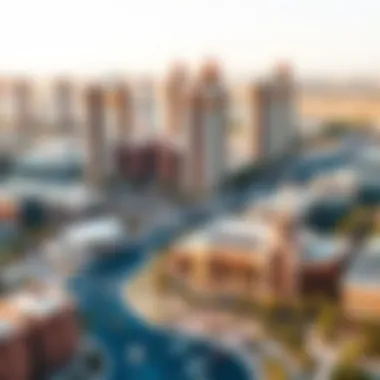
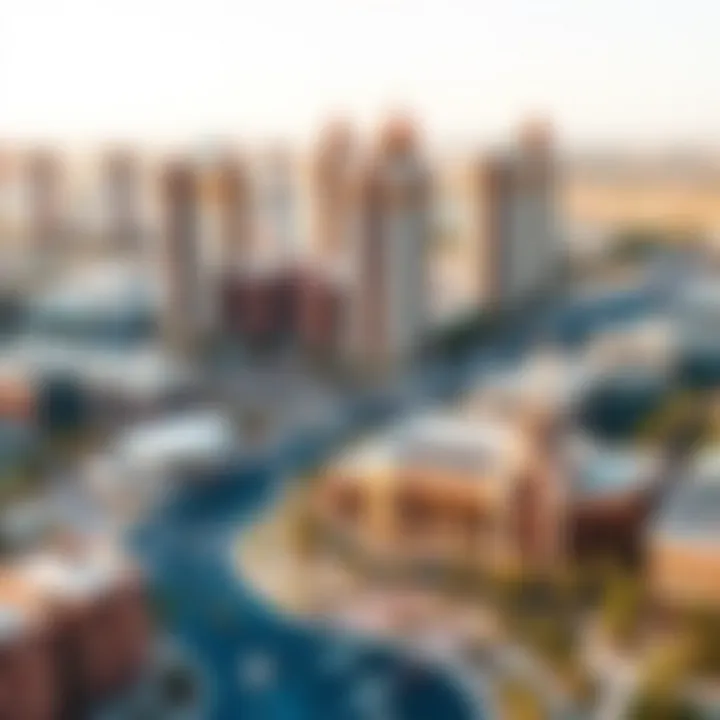
The topic of future developments in Mohammed Bin Zayed City is a focal point for understanding the city’s trajectory and prospects. As the urban landscape continues to evolve, these developments hold significant relevance not just for prospective investors and homeowners but also for the sustainability of the community as a whole. With a concerted effort towards enhancing infrastructure and amenities, such developments lay the groundwork for a vibrant urban experience.
It is crucial to track upcoming projects actively, which can give stakeholders insights into what’s around the corner, from residential complexes to commercial centers. These projects often translate to improved living standards and job opportunities, which in turn boost the local economy.
Upcoming Projects
Several ambitious projects are on the horizon, signifying a transformative phase for Mohammed Bin Zayed City. Notable among them is the Mohammed Bin Zayed City Mall, expected to serve as the cornerstone of retail and leisure activities in the area. This facility aims to bring everything from high-end shopping to family entertainment under one roof, making it a hotspot for residents and visitors alike.
Another highlight is the Green Parks Initiative, which is set to enhance green spaces in the city, promoting eco-friendliness and ensuring that residents have ample outdoor recreation options. These parks are not just about beauty; they will also play a role in environmental conservation, benefiting local wildlife and offering residents a sanctuary amidst urban life.
While some projects focus on commercial growth, others aim to boost community engagement through facilities like community centers and sports complexes. Investing in these projects can set a solid foundation for a thriving social fabric within the city.
Impact on Local Economy
The ramifications of these developments on the local economy cannot be overstated. When new businesses and housing ventures open their doors, they create jobs, which is the lifeblood of any flourishing urban locality. For instance, the construction phase of these incoming projects itself is likely to employ skilled laborers, architects, and various tradespeople. Once completed, these establishments will necessitate a workforce, further enhancing employment options available to the community.
Additionally, with more shopping venues and recreational facilities, an increase in foot traffic is inevitable, which can be beneficial for local businesses, elevating their profitability. The influx of potential new residents signifies a vibrant marketplace, in which companies—from coffee shops to tech startups—can thrive. The boom in commercial activity can also encourage existing businesses to expand or upgrade, leading to a cycle of economic growth.
“Economic development isn't a sprint; it's a marathon.”
In summary, future developments in Mohammed Bin Zayed City are set to revitalize the neighborhood, making it not just a place to live, but a thriving community with potential for engagement, commerce, and growth. Keeping an eye on these projects will reveal numerous opportunities and challenges that can shape the city’s landscape in the years to come.
Navigational Tools
Understanding the layout and features of Mohammed Bin Zayed City can feel like piecing together a puzzle. In this fast-evolving urban landscape, navigational tools serve as crucial instruments, allowing residents and visitors to traverse the city with ease. These tools not only aid in physical navigation but also provide insights into the city’s ongoing developments, amenities, and unique spots worth exploring. The significance of being familiar with navigational tools cannot be overstated— they can often elevate the experience of discovering this burgeoning locality.
Digital Maps and Applications
In our tech-driven world, digital maps have become indispensable. In the case of Mohammed Bin Zayed City, numerous applications cater to varied navigational needs. Popular apps such as Google Maps and Waze offer real-time data, helping users find optimal routes, traffic conditions, and even public transport options. But beyond mere navigation, these digital platforms often highlight local businesses, parks, and points of interest, giving users a holistic view of what the city has to offer.
For instance, when entering the city for the first time, utilizing Google Maps can reveal hidden gems that might not be on a traditional map. This not only makes navigation straightforward but also enriches the experience by pointing to cafés, shopping centers, and recreational facilities that enhance daily life.
- Key Digital Tools
- Google Maps
- Waze
- Apple Maps
Moreover, these applications often feature user-generated content such as reviews and photos, offering authentic perspectives on local establishments. This feature allows potential residents or investors to gauge the community vibe and services available before making any commitments.
Physical Maps
While digital maps have their perks, many people still value the feel of a physical map in hand. Physical maps of Mohammed Bin Zayed City serve as a tangible reference point that can be particularly useful in areas with poor internet connectivity or for those preferring a more traditional approach to navigation. They often provide a simplified overview of streets, major landmarks, and residential zones, making it easy for someone to grasp the layout at a glance.
Furthermore, local tourist centers or municipal offices often distribute these maps for free, which can be a handy resource for newcomers. Notably, having a well-printed map can also offer insights into city planning and zoning that may not be as apparent in digital formats.
- Benefits of Physical Maps
- No need for battery or internet
- Visual overview of areas and zones
- Valid for historical context and educational purposes
Both digital and physical tools have their unique strengths and weaknesses, and choosing between them often depends on the context of the user's needs. Many residents find that using a combination of both can lead to a more comprehensive understanding of their surroundings, enhancing both everyday navigation and overall engagement with the community.
"Maps are a way to confront the unknowable, to illuminate the dark beyond our immediate surroundings."
Thus, adept use of these navigational tools not only aids functionality but also cultivates a richer experience for those journeying through Mohammed Bin Zayed City.
Cultural Landscape
The cultural landscape of Mohammed Bin Zayed City plays a vital role in shaping the identity of this burgeoning urban area. As the city develops, it does not just focus on infrastructure and real estate; it embeds the essence of its community's heritage and aspirations into its physical design. A robust cultural landscape enriches the lives of residents and acts as a magnet for investors and visitors alike, presenting a more nuanced and holistic view of the city.
Cultural Institutions
Cultural institutions are the backbone of community cohesion and the flourishing of local traditions. In Mohammed Bin Zayed City, several establishments and organizations are dedicated to promoting arts and culture, providing a platform for creativity and expression. Institutions like galleries, museums, and cultural centers are crucial. These spaces often play host to exhibitions that showcase regional artists and craftspeople, allowing for a dialogue between historic practices and contemporary interpretations.
Furthermore, educational initiatives in local schools focus heavily on incorporating UAE's rich heritage into the curriculum, fostering a sense of pride and identity among the younger generations.
- Examples of Cultural Institutions:
- Abu Dhabi Art Hub: A space for local artists to collaborate and display their work.
- Cultural Foundation: Offers programs in arts education, including workshops and craft fairs.
The presence of these institutions not only preserves but promotes the cultural narrative of Mohammed Bin Zayed City, making it more appealing for prospective residents who value community engagement.
Community Events
Community events serve as lively touchstones within the cultural landscape, where neighbors come together to celebrate and connect. These gatherings often highlight local heritage, cuisine, and music, bringing vibrancy to the everyday life of the city. Events like food festivals, art fairs, and seasonal celebrations not only foster a spirit of inclusivity but also provide platforms for local businesses to thrive.
- Types of Community Events:
- Annual Cultural Festival: An event that showcases traditional music, dance, and food.
- Weekend Art Markets: Local artists and craftsmen display their works for sale, creating a bustling marketplace atmosphere.
These events encourage community participation and strengthen local identity, which is increasingly vital in urban settings where anonymity can be commonplace. Furthermore, they attract attention from outside the city, bringing in visitors who contribute to the economy while fostering a greater appreciation of local culture.
"A healthy cultural landscape can elevate community spirit and bolster economic growth."
In summary, the cultural landscape of Mohammed Bin Zayed City is not just about maintaining heritage, but also about actively engaging the community in its evolution. By embracing cultural institutions and community events, residents are given a strong sense of belonging while investors see a vibrant city that is all the more attractive for its nuanced character.
Challenges and Considerations
In examining Mohammed Bin Zayed City, one must confront various challenges and considerations that transcend mere geographical layouts. These issues can significantly influence both the quality of life for its residents and the omnipresent interests of investors and urban planners. Understanding these dynamics is paramount, as they form the backbone of how this burgeoning urban center evolves. The intricate interplay between urban planning, sustainability, and community engagement reveals a broader landscape that shapes pathways toward growth and resilience.


Urban Planning Challenges
Urban planning is a crucial puzzle piece in the broader picture of Mohammed Bin Zayed City. The city's rapid growth poses distinct challenges, necessitating careful consideration of infrastructure needs. As residents flock to this area, the demand for housing, transportation, and public services rises dramatically. The city planners must tackle questions such as:
- Housing Density: How can they accommodate a growing population without overcrowding?
- Transportation Infrastructure: Are the roads and public transit systems capable of handling increased traffic?
- Public Amenities: Are there sufficient schools, parks, and healthcare facilities to meet the needs of the growing populace?
Each decision made can have resonating impacts—positive or negative—on the urban environment. A primary concern is striking the right balance between development and maintaining livability. Overbuilding can lead to congestion, diminished quality of life, and frustrated residents. Conversely, slow development may hinder economic opportunities and affordable housing availability, risk that potential homeowners may turn away from.
Another challenge is ensuring that growth does not come at the expense of local culture and community identity. Future developments must integrate cultural elements to preserve the charm that residents value.
Environmental Considerations
Every urban area grapples with its environmental footprint, and Mohammed Bin Zayed City is no exception. The intersection of urban growth with environmental sustainability presents a complex challenge to planners and local authorities. With the desert landscape and proximity to natural reserves, the city must navigate:
- Water Resource Management: How to balance the needs of a growing population with the sustainable use of limited water resources.
- Energy Consumption: What strategies can be implemented to promote renewable energy and reduce the city’s carbon footprint?
- Biodiversity Conservation: How to protect local flora and fauna while developing residential and commercial spaces?
Emphasizing eco-friendly designs in buildings and investing in green spaces may seem like common sense solutions, but they also come with a financial trade-off. Thus, decision-makers often find themselves at an impasse between fiscal responsibility and environmental accountability. As the global community continues to address climate change, the pressure to implement sustainable practices only grows stronger.
"Urban planning without consideration for the environment is akin to building castles in the sand—beautiful until the tide comes in."
In summary, addressing these challenges and considerations not only enhances the livability of Mohammed Bin Zayed City but also positions it as a model for future urban developments, thereby attracting savvy investors and sustainable growth proponents alike.
Community Development
Community development is more than just a buzzword in contemporary urban planning; it's a vital component in ensuring that residents and stakeholders in Mohammed Bin Zayed City thrive. Within this intentionally designed locale, community development reflects a commitment to fostering togetherness, inclusivity, and sustainable growth. As one examines the map of Mohammed Bin Zayed City, each line and trajectory represents not just infrastructure but the ongoing evolution of a place intended for its people.
Community Initiatives
In Mohammed Bin Zayed City, community initiatives play an instrumental role in shaping the local culture and environment. These initiatives foster connections among residents and encourage participation in activities that celebrate cultural diversity, environmental responsibility, and social unity. Examples of community initiatives include:
- Cultural Festivals: Celebrating the unique blend of traditions that residents bring, these festivals offer a tapestry of arts, food, and cultural showcases that embody the spirit of the city.
- Environmental Programs: Designed to promote sustainability, these initiatives often involve community clean-up days, tree planting events, and educational workshops on environmental stewardship.
- Recreational Activities: From sports leagues to community fitness programs, these initiatives ensure that residents have ample opportunity to engage in healthy lifestyles while building relationships with neighbors.
Local organizations often spearhead these initiatives, creating synergies with municipal authorities to tailor programs that resonate with the community’s needs. This interconnectedness nurtures a sense of ownership and pride among residents, critical to the ongoing development of a vibrant community.
Public Participation
Public participation is another cornerstone in the edifice of community development in Mohammed Bin Zayed City. The inclusion of diverse voices in the planning and execution of community projects heralds a more democratic approach to urban development. This can manifest in several ways:
- Town Hall Meetings: These gatherings enable residents to voice their opinions, propose ideas, and raise concerns regarding community initiatives.
- Feedback Mechanisms: Online surveys and interactive platforms allow citizens to provide input on local developments or services, ensuring their perspectives are considered in decision-making.
- Volunteer Opportunities: By incentivizing residents to engage in community projects, the city not only benefits from additional hands but also fosters a spirit of collective responsibility.
Through public participation, community development takes on a life of its own, thriving on the diverse contributions of its citizens. The result is a more cohesive society where individuals feel valued and empowered to influence the future of their community. As this medley of voices harmonizes, it paves the way for a robust and resilient urban landscape.
"The beauty of a city lies not only in its buildings but in its people and the connections they forge."
Ultimately, the community development initiatives and public participation frameworks in Mohammed Bin Zayed City are inseparable from the city’s blueprint. They affirm that every resident is a vital thread in the fabric of the community, contributing to a shared vision that transcends individual aspirations.
Investment Strategies
Investing in real estate, particularly in urban developments like Mohammed Bin Zayed City, requires astute strategies. Given its growth potential, understanding how to navigate this landscape can open up rewarding avenues for investors and homeowners alike. The importance of investment strategies can't be overstated; they can delineate the fine line between profit and loss. This section will shed light on key elements that investors should consider, the benefits of various approaches, and thoughtful considerations in strategizing for this burgeoning locale.
Assessing Risk vs. Reward
In the realm of investment, understanding risk versus reward is akin to navigating a ship through a stormy sea. Investors must weigh potential financial gains against the risks involved. For Mohammed Bin Zayed City, several factors come into play:
- Market Research: Staying updated on real estate trends and economic forecasts is vital. A downturn can be as unpredictable as the weather, affecting property values.
- Investment Horizon: Short-term gains might be alluring, but higher risks accompany them. Long-term investments often yield steadier returns.
- Property Type: Residential units can be less volatile compared to commercial properties, but the latter may offer higher returns in prime locations.
- Economic Indicators: Monitoring local employment rates, population growth, and infrastructure developments can provide valuable insights into future property values.
By comprehensively assessing these factors, investors can formulate strategies that align with their risk tolerance and financial objectives.
Long-term vs. Short-term Investments
Deciding between long-term and short-term investments can feel like choosing between a tortoise and a hare. Each path has its own merits and challenges:
- Long-term Investments
- Short-term Investments
- Stable Cash Flow: Renting properties in Mohammed Bin Zayed City can provide a reliable income stream over time. This strategy is less risky, as properties generally appreciate in value in developing areas.
- Tax Benefits: Investors often find that long-term holdings can come with substantial tax advantages, allowing them to conserve more capital.
- Resilience Against Market Fluctuations: Properties held long-term can weather economic downturns better than those sold off quickly during tough times.
- Quick Returns: Flipping properties can bring about quick profits, especially if investors can buy at a low price and make improvements before reselling.
- Dynamic Market Trends: Investors focused on local trends can capitalize on demographic shifts or infrastructural changes.
- Active Management: Short-term investments require more hands-on engagement, allowing for immediate satisfaction but potentially exhausting too.
Ultimately, the choice between long-term and short-term investments in Mohammed Bin Zayed City should align with one's financial goals and capacity to manage risks effectively. By considering these strategies, investors can better position themselves in the fast-evolving urban landscape.
"Without a strategy, investing is like sailing without a compass; you'll drift and may end up lost."
For more details on investment trends and strategies, consider visiting
Investopedia or BiggerPockets.
Understanding the intricacies of investment in a developing area like Mohammed Bin Zayed City is essential, as the right approach can yield significant rewards.
Finale
In summarizing the exploration of Mohammed Bin Zayed City, it’s crucial to underscore the multifaceted nature of this urban environment. The city’s map isn't merely a guiding schematic; it embodies the aspirations and logistical realities of an ever-evolving locality. Understanding the layout and infrastructure reveals the careful planning that has gone into making this area a gem in Abu Dhabi.
The insights offered in this article can significantly aid prospective investors and homeowners as they navigate the complexities of real estate in this burgeoning region. The detailed exploration of residential zones, commercial hotspots, and transportation options enables stakeholders to make informed choices. For instance, knowing the proximity of major landmarks and the accessibility of public transport ensures a better quality of life for residents, facilitating easier commutes and access to amenities.
Key considerations about the city’s growth trajectory and investment landscape highlight potential benefits for future ventures. With upcoming developments shaping demand, understanding these dynamics offers a competitive edge. Investors can weigh risks against the rewards presented by a ripe, yet competitive market.
This closing section reinforces that having a comprehensive grasp of the city map is fundamental not just for orientation, but for fostering community involvement and economic opportunities. Recognizing the connectivity between various sectors of the city helps in enhancing one’s living experience and investment strategies. Thus, the map serves as a living document, guiding both residents and investors alike through the intricate tapestry of opportunities waiting to be explored.
Summary of Key Points
- Geographical Layout: Mohammed Bin Zayed City is strategically placed with planned boundaries fostering growth.
- Transport and Accessibility: Detailed understanding of the city's transport infrastructure, including thoroughfares and public transport access, ensure convenience for all users.
- Residential and Commercial Insights: Analyzing housing types and commercial zones presents a clear picture of living and investing within the city context.
- Investment Landscape: Market trends and future challenges should be carefully evaluated, enabling wise decisions for both short-term and long-term investors.
Each of these elements encapsulates the essence of navigating Mohammed Bin Zayed City, making its map a pivotal tool for anyone looking to engage with this remarkable urban space.
"Knowledge of this evolving city’s map unlocks potential heights in lifestyle and investment, bringing endless possibilities to those who dare to tread its paths."
For further understanding of urban development, consider exploring resources on Wikipedia and branches of Britannica. Community insights and discussions can also be found on platforms like Reddit and Facebook.











